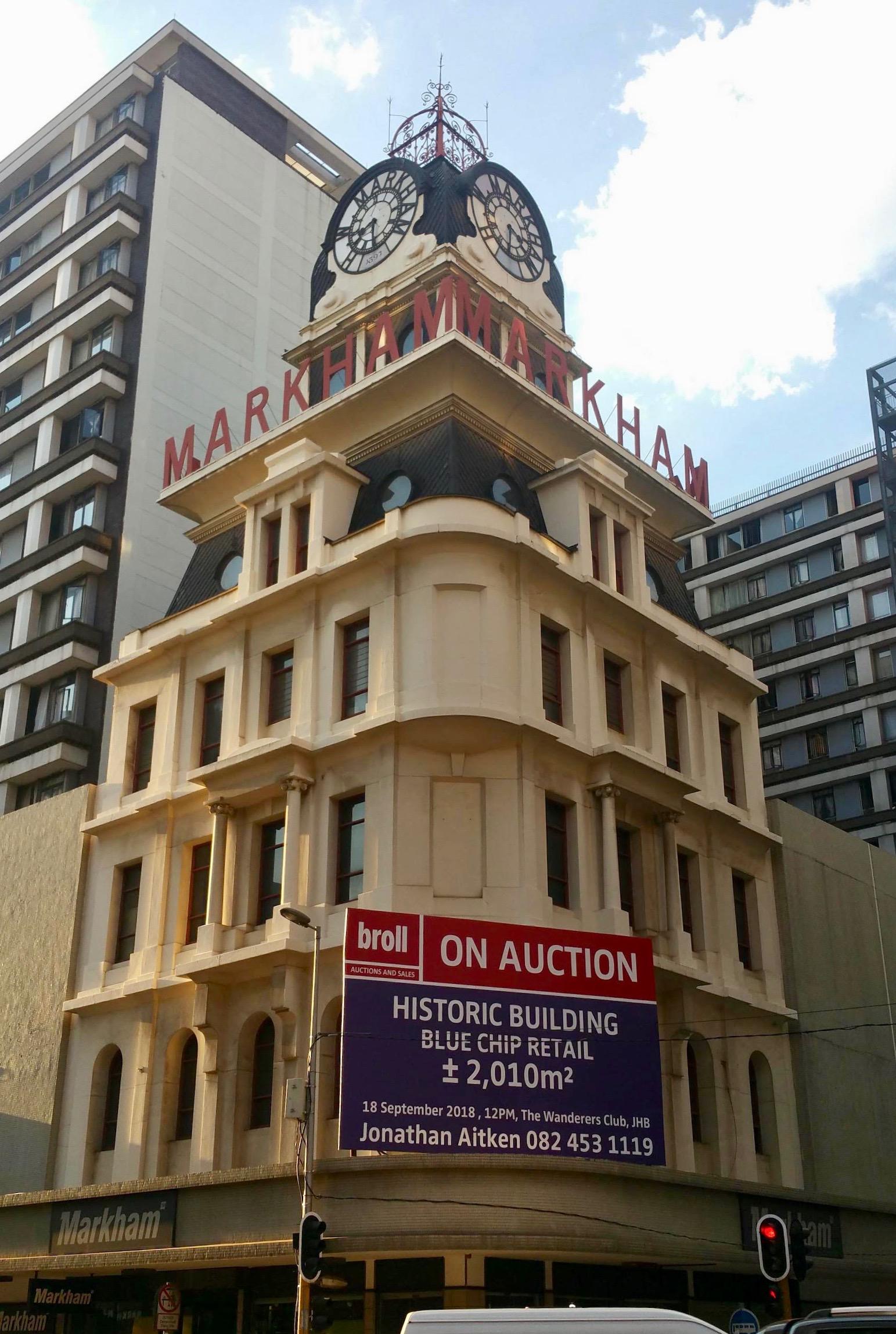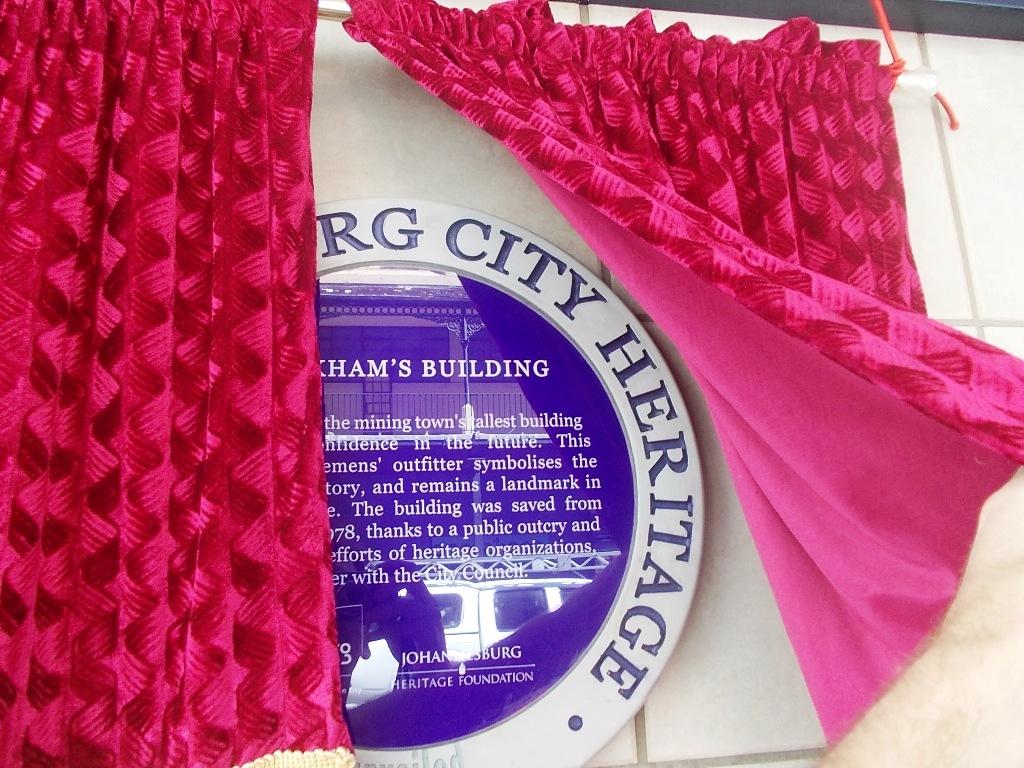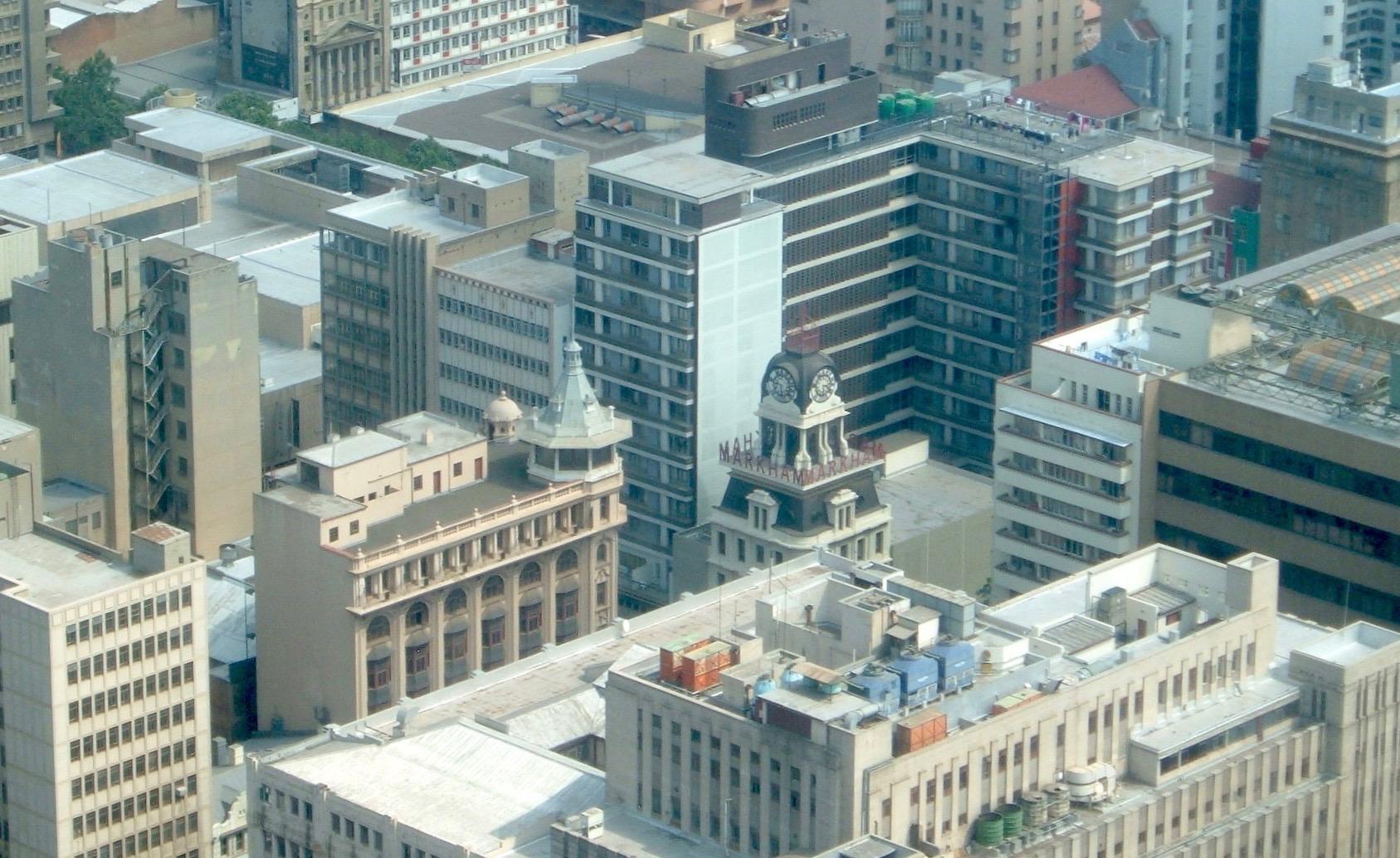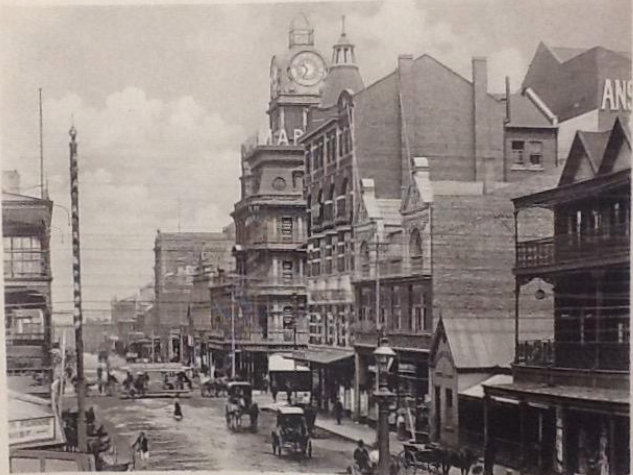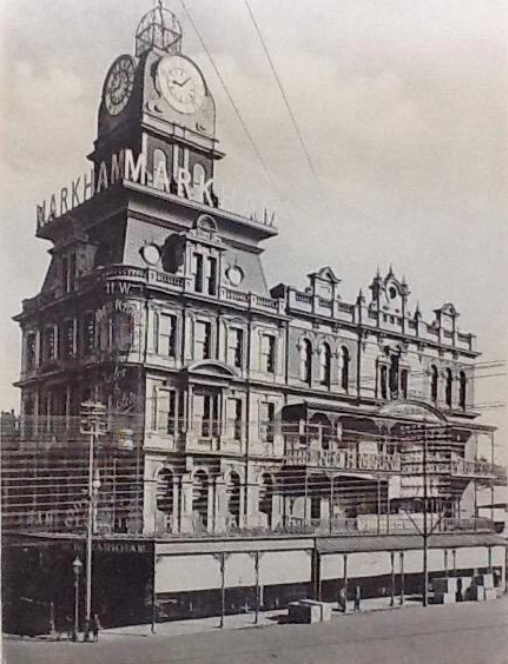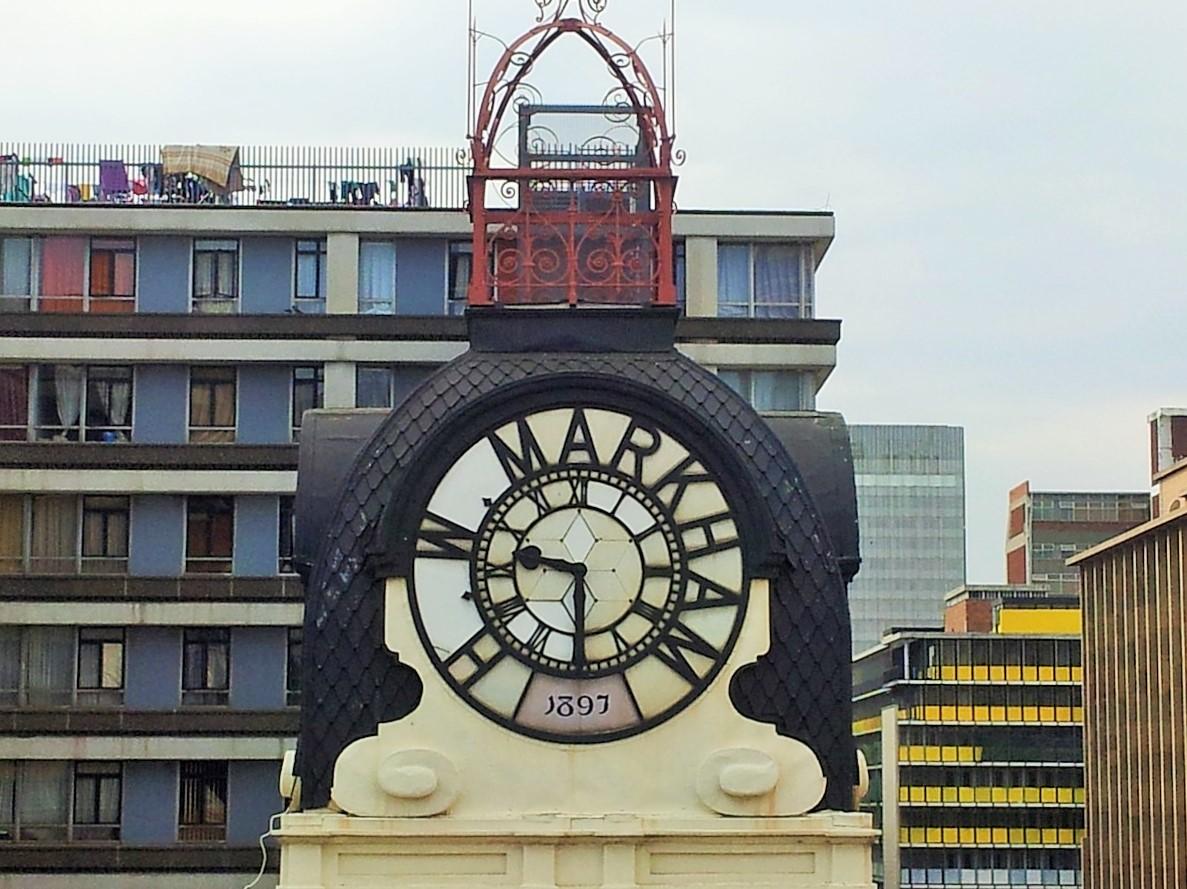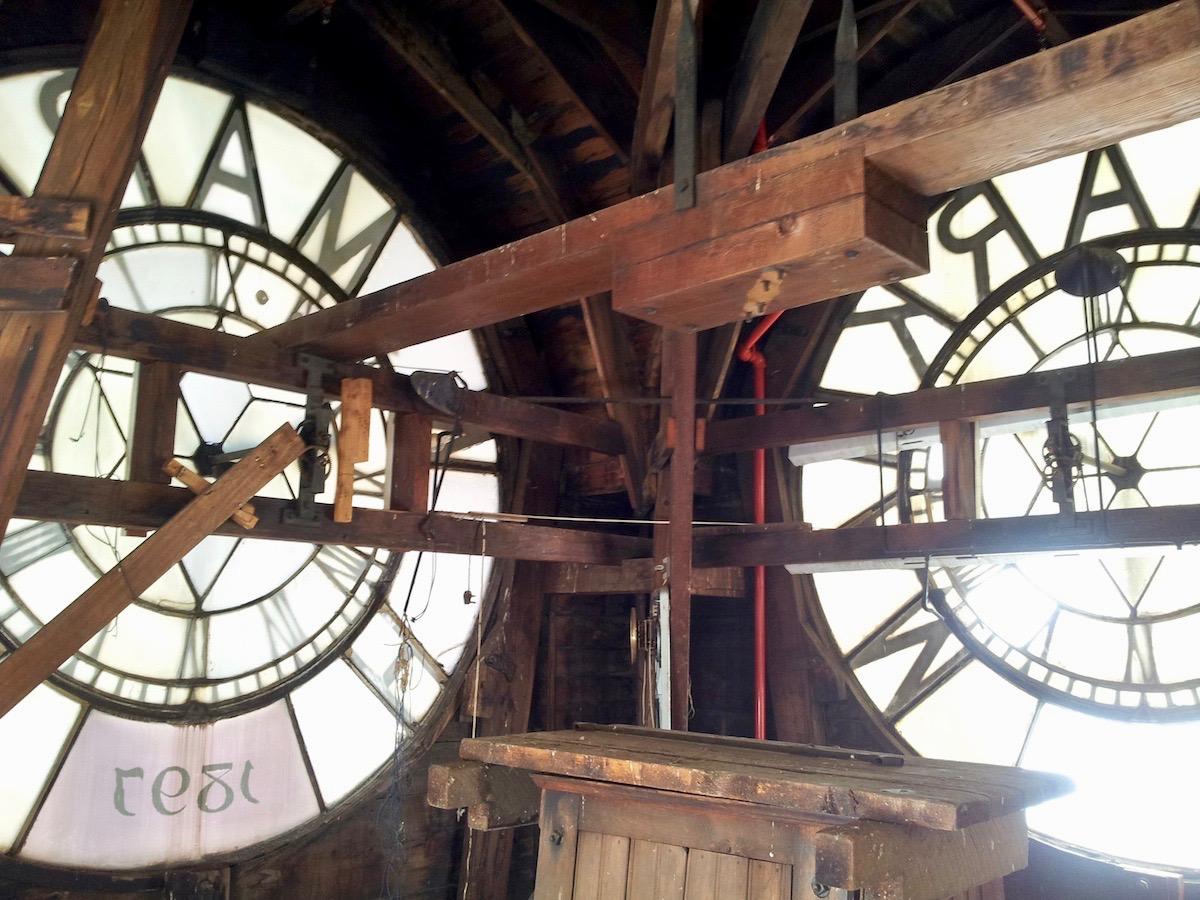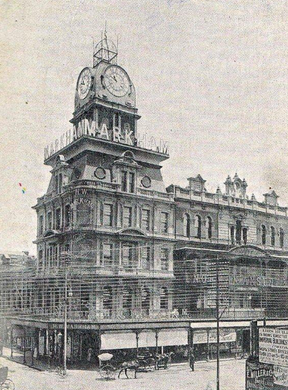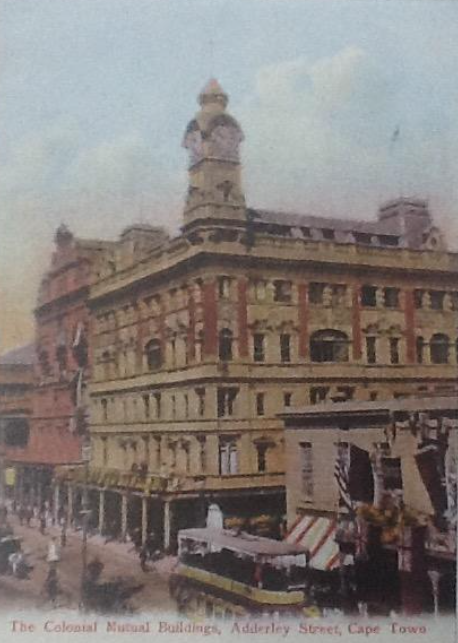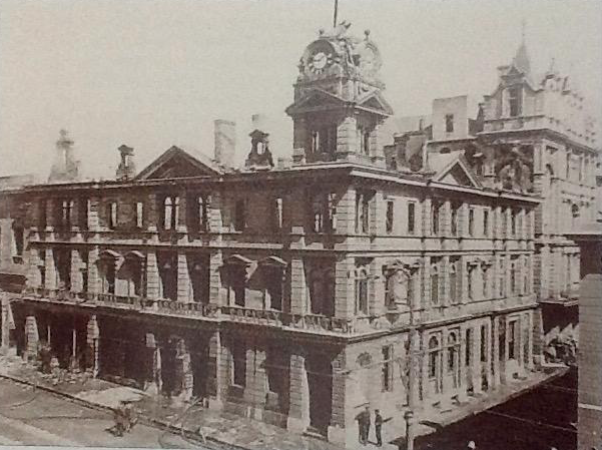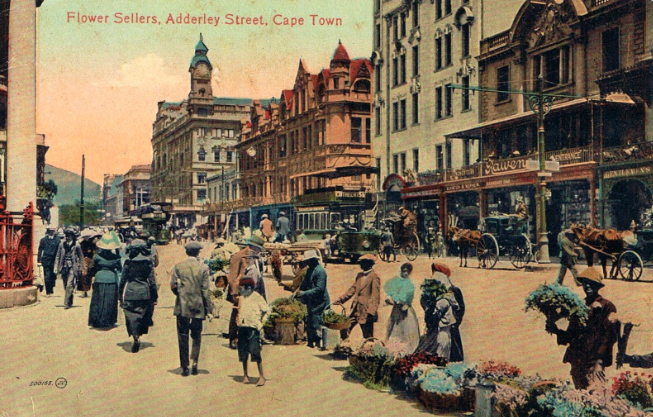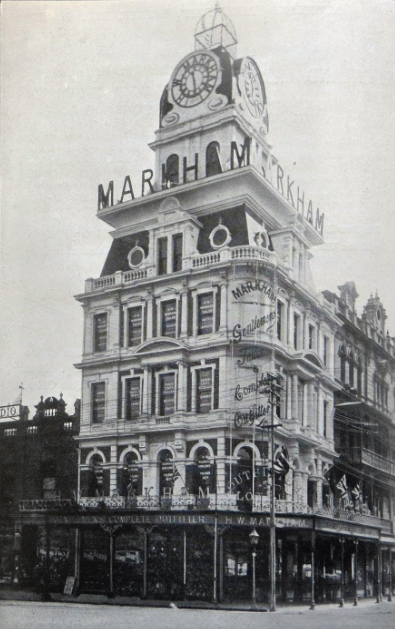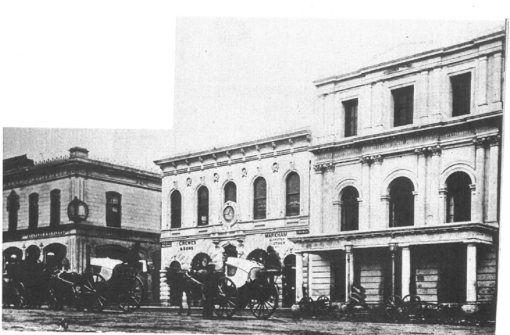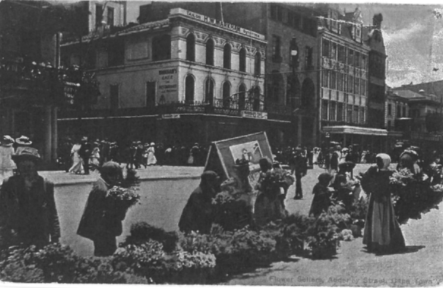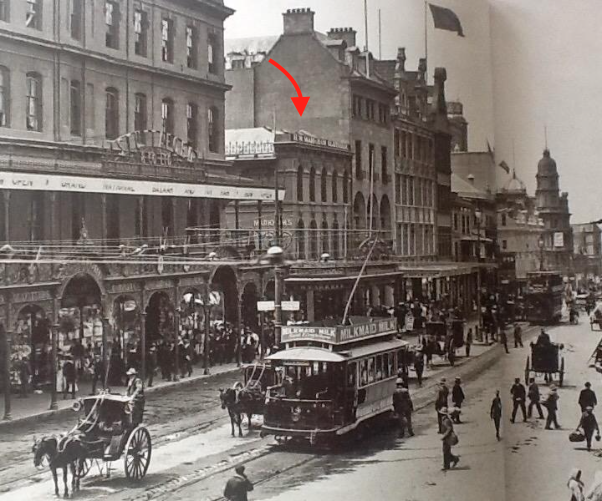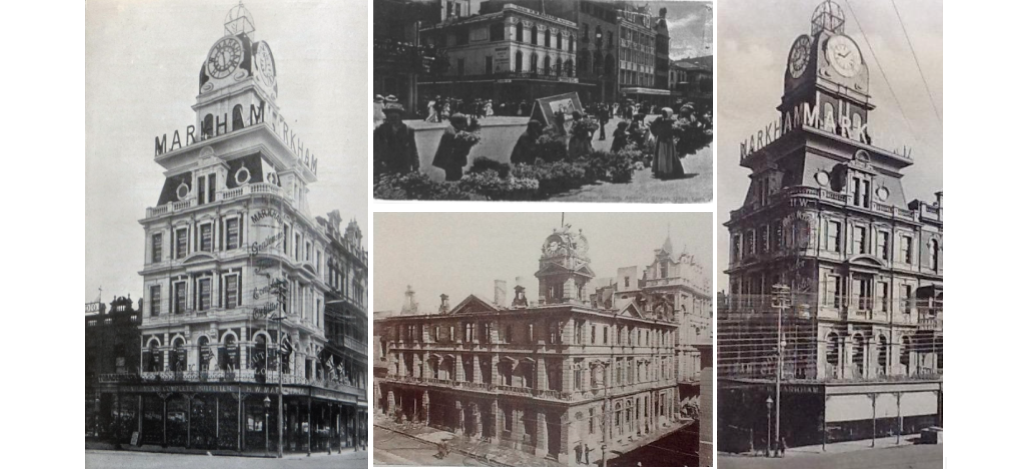
Disclaimer: Any views expressed by individuals and organisations are their own and do not in any way represent the views of The Heritage Portal. If you find any mistakes or historical inaccuracies, please contact the editor.
Markhams Building, located on the corner of Eloff and Pritchard Streets in Johannesburg, is a landmark of the city. It is striking because it has survived. Built in 1897, it is nearly as old as the city itself.
The heritage icon was sold on auction in September 2018 (The Heritage Portal)
Saving Markhams was a heritage battle of note in the late seventies (click here for details). Markham’s was a mens outfitters where you could purchase both off the rack readymade suits and bespoke clothing. In 1972 Markham’s was the shop for my about to be husband to purchase his wedding attire - he opted for a pure wool cheque fabric and a matching mustard shirt. The suit was durable and lasted about two decades until the moths got it. Today we laugh at how dated and period our wedding photos look.
The City of Johannesburg in conjunction with the Johannesburg Heritage Foundation unveiled a blue plaque at Markhams in October 2012 (I was one of the JHF supporters). It was a proud moment.
Markhams plaque unveiling (The Heritage Portal)
The history of Markhams has been well documented on The Heritage Portal with the reproduction of the J Campbell-Pitt article from Restorica 1979 (click here to view). In 2002, Dr Johann Bruwer assessed the building. His competent report is accessible online (click here to download). Bruwer stresses that, the Markhams building is the only extant commercial building remaining in Johannesburg erected on a maiden stand (this means that it was the first building on the stand - remarkable indeed for Johannesburg). Johannesburg readily recycled its building sites time and again in a cycle of build to the latest designs, accept obsolescence, demolish and build again. Our city shows the imprint of property development through booms, recessions, revivals and depression. Markham’s is unusual because it raised our conscious awareness of heritage.
The preservation of Markhams with its iconic Clock Tower represented a major victory (The Heritage Portal)
An early view of Pritchard Street showing Markhams dominating the skyline (Barnett’s Views of Johannesburg and Suburbs)
A close up view of Markhams (Barnett’s Views of Johannesburg and Suburbs)
HW Markham was a Cape Town firm but due to the massive boom on the Witwatersrand, the decision was taken to establish a shop in the heart of the city of gold. The firm commissioned architect George Ransome, who had designed the Cape Town Markhams in Adderley Street, to design an even grander Johannesburg building. I thank Mike Walker for drawing out this significant Cape Town connection. The Markhams Building was unusual in that it was purpose built for the client. The design dated to 1896 and the building was completed in 1897. Reaching five stories into the sky (plus the clock tower), it was the tallest building in Johannesburg for a time. There were no basement floors and no provision for parking (carriages and delivery carts drawn by horses pulled up on the street frontages). Mike Walker comments that a clock on a prominent building had a functional use. While reasonably well off city gentlemen may have owned a silver pocket watch on an Albert chain (linking buttonhole to pocket), wrist watches were rare. A clock gave the man in the street “the time of the day”.
The Markhams Clock Tower (The Heritage Portal)
Inside the Clock Tower (The Heritage Portal)
Another early view of the building
Walker makes the point that HW Markham commissioned Ransome to design his Johannesburg building in the style of the 1887 Colonial Mutual Building in Cape Town. This has a touch of pretension, whimsy and the financial resources for a visibly grand building.
Postcard of the Colonial Mutual Building (Fom Michael Walker’s The Early Architects of Cape Town)
There is a certain similarity between the design of the Johannesburg Markham’s and the Colonial Mutual Building. Both have elaborate clock towers and mansard roofs. The Artefacts website lists several of Ransome’s projects and with the exception of Markhams, they were all Cape Town buildings (click here to view list).
The Cape Town Colonial and Mutual Building was a victim of fire in 1901. It was rebuilt and stood until the 1950s when it was demolished and replaced by a thirteen storey high rise edifice. So we need to value the Johannesburg Markham’s even more because it carries the echo of a lost Cape Town.
The Colonial Mutual Building after the fire
This postcard shows Adderley Street circa 1921 with flower sellers in the foreground and the Colonial Mutual building with its clock tower further up the street.
I recently purchased a copy of the Johannesburg and Pretoria Guide, published by Dennis Edwards and Co (2nd Edition). It carries no date, but from internal evidence it was published after May 1905. There is a four page advertorial on Markhams (pages 184-187). This advertorial includes two photographs - Markhams in Pritchard Street and a second Johannesburg Markham’s premises in Commissioner Street (more on this building in a later article).
Markhams as it was in the early 20th century. By that date the store was well established in Edwardian Johannesburg catching the flush of the town’s expansion after the Anglo-Boer War.
This foray into Markhams in Johannesburg led me into the Cape Town history of the firm. What were the origins of Markhams in Cape Town? Did the Markham’s building in Cape Town look anything like the Johannesburg Markhams?
The advertorial in the Edwards guide gives a fair amount of information on HW Markham and the firm's history. Henry William Markham was an immigrant from England who arrived in Cape Town in 1873 and established a successful tailoring and outfitting business.
The business was located in Crewe’s Building located on the corner of Adderley and Hout Streets, opposite the General Post Office. Michael Walker has kindly supplied a postcard photo of this early building. Ransome designed a new Markham’s building on the same site circa 1890.
Crewe’s building circa 1876 (photo supplied by Michael Walker)
Cape Town Markhams circa 1890 (Photo via Michael Walker)
By 1905 the building had been extended from Adderley Street along the full length of Hout Street to St George’s Street and Michael Walker adds that there was also a Markhams Café!
The history given by the firm on its website is inaccurate (click here to view). The timeline incorrectly states that the firm opened in Johannesburg in 1873 and the wrong photograph for the first building is used. The photograph shown was the second Markhams branch in Johannesburg, known as the Corporation Building. The Edwards advertorial is a far better guide to the Cape Town activities of Markhams and dates the physical location of Markhams in Cape Town as 1876.
The advertorial describes the achievements of the firm as doing much “to remove the difficulty which confronts the moderately-well-to-do when they attempt to indulge in the legitimate desire of making a smart and 'well-groomed' appearance.” Their gentlemen’s apparel stood “the test of comparison with examples of orders executed by the best London houses”. I love the London comparison - again it is provincial aspiration and ambition that jumps off the page.
The Markham’s Cape Town building as it looked in the early 20th century (Cape Town Then and Now)
To be continued...
Kathy Munro is an Honorary Associate Professor in the School of Architecture and Planning at the University of the Witwatersrand. She enjoyed a long career as an academic and in management at Wits University. She trained as an economic historian. She is an enthusiastic book person and has built her own somewhat eclectic book collection over 40 years. Her interests cover Africana, Johannesburg history, history, art history, travel, business and banking histories. She researches and writes on historical architecture and heritage matters and is well known for her magnificent book reviews. She is a member of the Board of the Johannesburg Heritage Foundation and is a docent at the Wits Arts Museum. She is currently working on a couple of projects on Johannesburg architects and is researching South African architects, war cemeteries and memorials.
Comments will load below. If for any reason none appear click here for some troubleshooting tips. If you would like to post a comment and need instructions click here.

